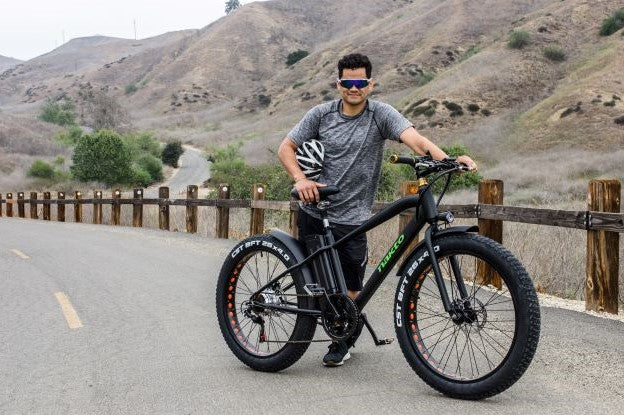Nov 24, 2022
Thin Tire and Fat Tire E-Bike: A Guide to Choosing the Right One
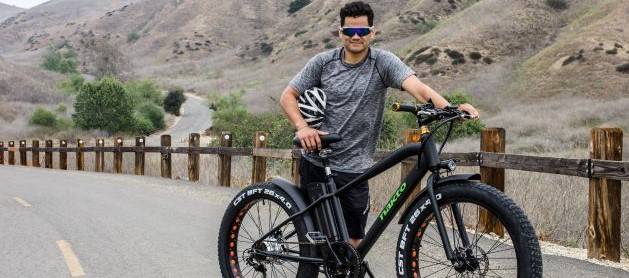
As far as tires go, there are primarily two options for e-bikes: tires with thin treads and tires with fat treads. For example, they differ in size, maintenance needs, weight, price, and pressure limits.
You can determine your speed and the bike's maneuverability, suspension, and range by choosing the right tires.
One of the first decisions you will have to make when choosing an e-bike is the type of tire that you want on your bike. This decision can be made based on two things; how you want to ride your bike and the terrain you plan to ride your bike on.
Both fat tires and thin tires have good and bad qualities. Thin tires work better on flat surfaces because of their easy handling. On the flip side, fat tires are more engineered for off-road e-bikes. Our goal is to help you decide what type of e-bike tire is best for you.
Without any further adieu, let's get right to it!

Thin tire e-bikes have been around for a while, but they are still a relatively new concept. So what are they? Thin tire e-bikes are what they sound like – bikes with thin tires.
If you want a bike that can easily handle turns and quick maneuvers, go with thin tires. They provide a firm grip that will make it easy for you to zip around the track. E-bikes have always had thin tires because of their smoothness and trim shape.
The width of thin tires is usually between 1.5 and 2.5 inches, and their less weight makes them easy to ride. Fat tires weigh more than thin tires due to their sheer size, but they are better for rough terrain.
Thin e-bike tires make riding easier because their gears are fairly straightforward to adjust. Additionally, riding is less strenuous because it requires less pedaling. One more thing that has to be taken into account is high air pressure. Thin tires don't get punctured as easily, unlike fat tires.
Thinner tires last longer than many other e-bike tires because they don't break as easily, and most riders cannot find time for bicycle repairs, given how busy their work lives are.
If you need an e-bike that helps you navigate city traffic, consider an electric bike with thin tires.
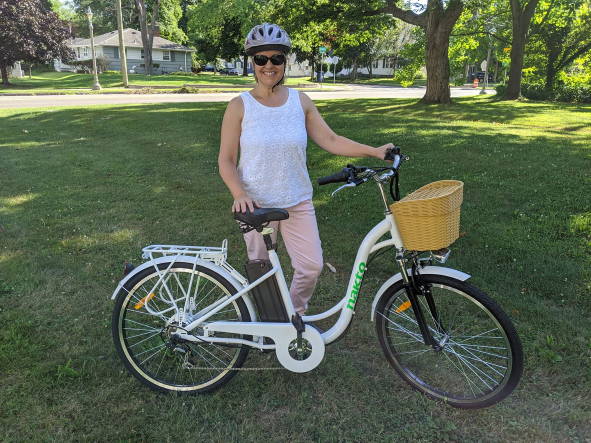
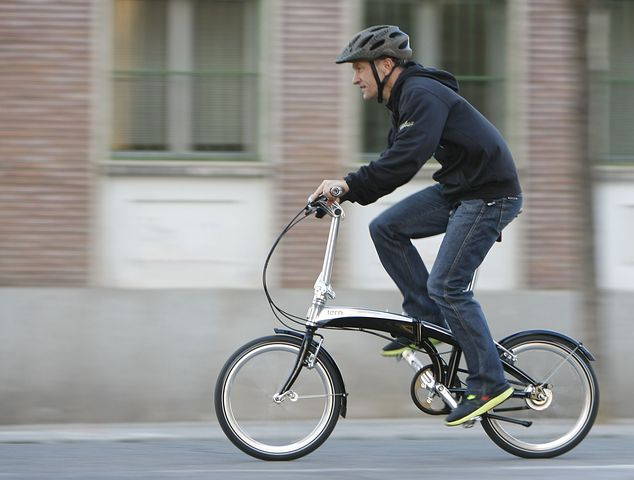
Thin tires, also known as hardtail e-bikes, are built with a much smaller diameter than fat tire bikes, making them lighter and more agile.
These bikes are typically used as an alternative means of transportation in urban areas where bike lanes may be difficult to come by, or public transportation is not very reliable.
They have become popular among commuters who live close enough to work that they can commute by bicycle but don't have time for leisurely rides on the weekends.
Some people also use these bikes to save on gas expenses and parking fees at their destination.
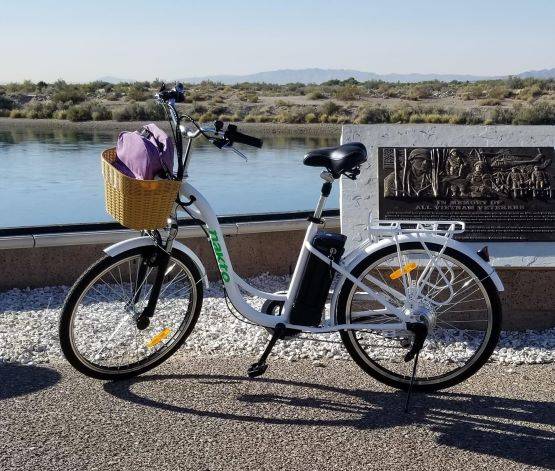
Thin tire e-bikes are becoming increasingly popular because of their many advantages. Here are some advantages of thin tires e-bike:
1. They're easy to transport. Thin tires are much easier to transport than traditional bikes because they're much lighter. This makes them perfect for people who want to take their bikes on vacation or travel on public transportation.
2. They're faster and more efficient. Thin tire e-bikes are faster and more efficient than traditional bikes because they have a lower resistance level. This allows you to ride faster and use less energy.
3. Thin tires can withstand more rolling resistance levels. Thinner tires are less resistant to rolling, meaning they can cover more ground with less effort. They are also more susceptible to punctures and other damage, so they may not be the best option for long-distance riders or those who frequently ride on rough terrain.
4. You don't need much storage space. Due to their size and weight (see point one), thin tires require very little storage space compared to regular bikes.
5. Thin tires are more affordable. Thin tires require less material than fat tires, which means they cost less to make and purchase. Thin tires also weigh less than fat ones, which saves money in shipping costs as well as wear and tear on your car when transporting your bike.
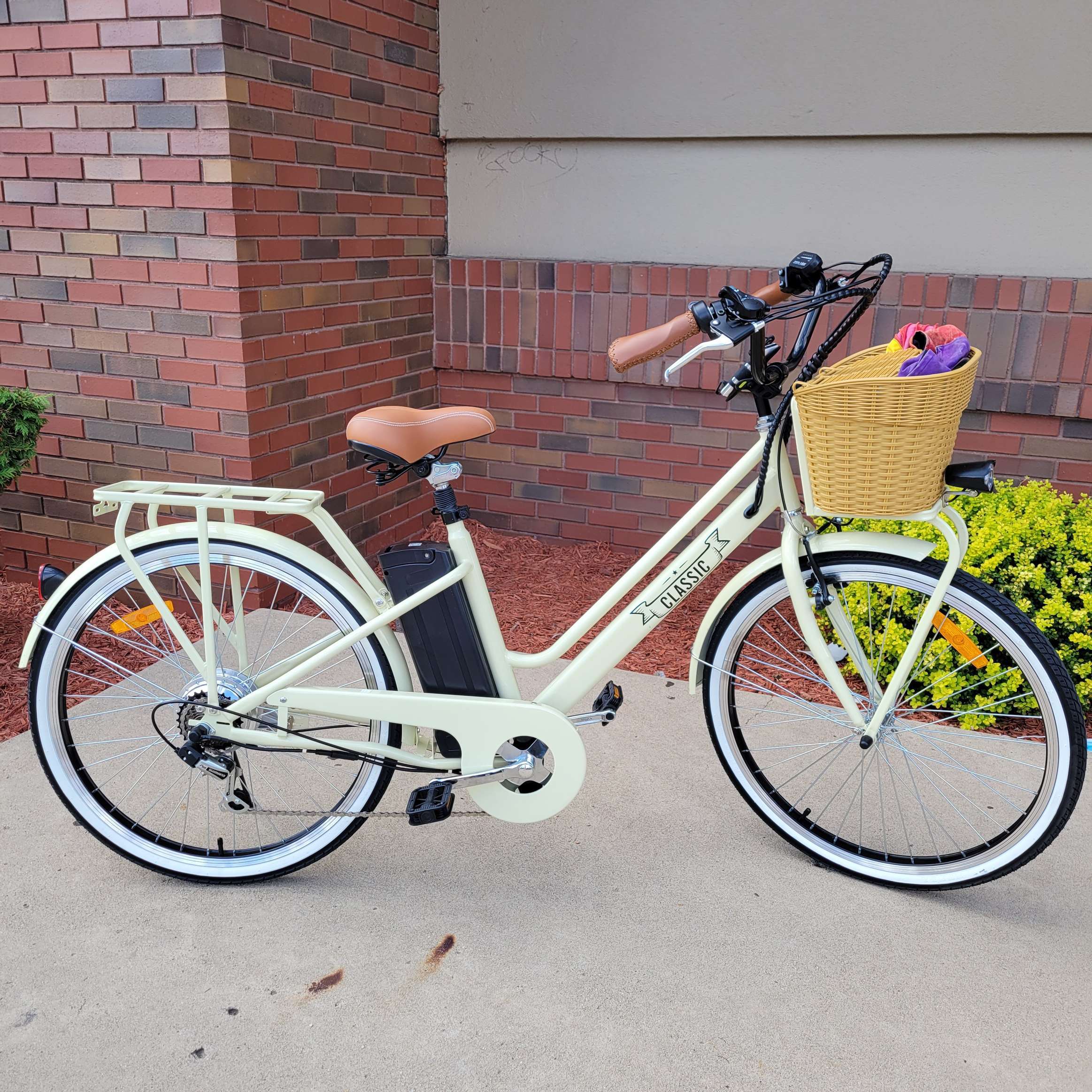
Some people might think that thin tires are better because they're lighter and require less power from the motor. But this is not always true because thin tires have a smaller contact patch with the ground, which reduces traction and can make them more challenging to ride on sand or in snow.
Below are some drawbacks of thin tire e-bikes:
●Provide less traction
The smaller contact patch means that thin tires offer less traction than fat ones. For example, getting your bike stuck in the mud with thinner tires is easier than fatter ones. If you stay in an area with a lot of rain, consider thicker tires because their increased surface area will give you a better grip, even if there's moisture on the road. And when climbing hills, those little ridges at the edge can be difficult to navigate with thinner tires, too, since they don't provide as much bite as fat ones.
●Thin tires are not designed for off-roading biking
Riding over bumps and broken pavement is tough on thin tires, so if you're planning to use your e-bike for recreational purposes like going camping, hunting, fishing, etc., then you should consider investing in a bike with larger tires.
●Thin tires wear out quicker
They lose air pressure quicker than fat tires because they don't hold air well. They also puncture easily, so you'll need to replace them sooner if you live in hilly or rocky terrain. Thinner rubber wears out faster under stress and heat, making thin tires a poor choice for rough terrains. You'll need to replace them more often - perhaps once every six months instead of yearly.
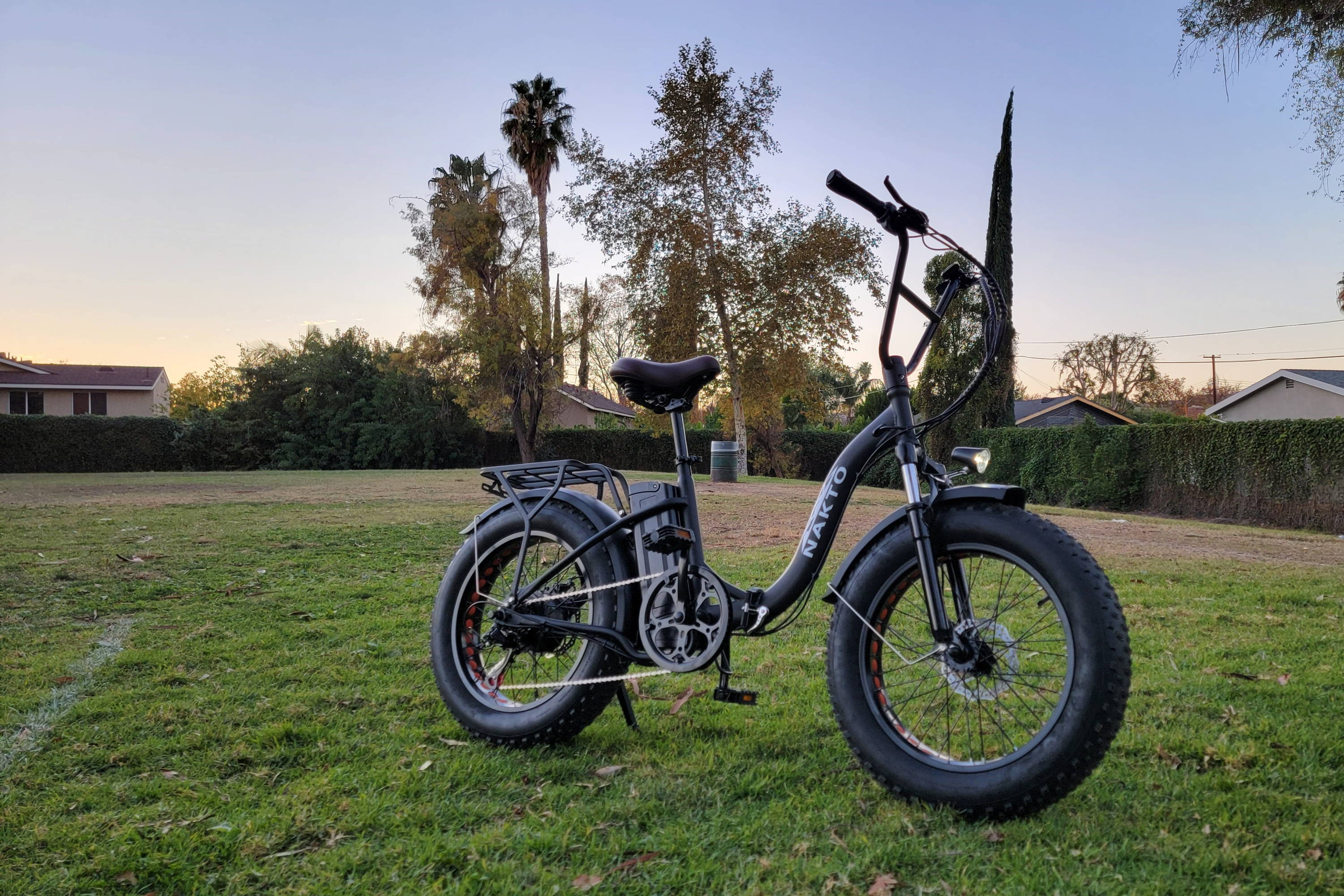
A fat tire e-bike is a specialized type of e-bike designed with larger tires to allow riders to traverse challenging terrain normally inaccessible by regular bicycles.
The tires are usually around 3 inches wide and 1 inch thick, significantly improving traction on loose sand, snow, or other surfaces where regular bikes would otherwise slide around or get stuck.
Fat tire bikes sometimes have suspension systems to provide a smoother ride over bumpy terrain. Fat tire bikes sometimes have suspension systems to provide a smoother ride over bumpy terrain.
These suspensions can come as front forks that absorb shock, rear shocks that act like springs on each side of the bike's seat post (or fat post), or through an entire system with both front and rear shocks. Fat tire bikes can handle many more types of ground than thin bike tires could ever hope to go through.
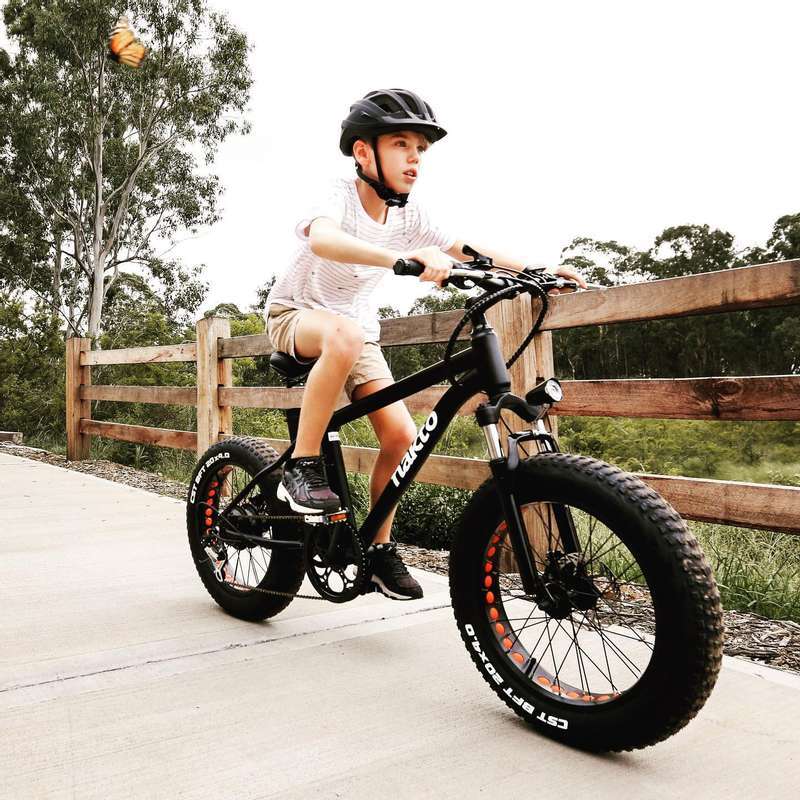
Fat tire e-bikes are great because they're perfect if you want an e-bike that can go off-road and pedal when needed. They're also good if you live in a very hilly area, as they have more torque and power than other e-bikes.
Fat tires are used for:
1.Off-roading
Some fat tires e-bikes have big fat tires and a motor that can help you go up hills or carry heavy loads of people or stuff. If your e-bike has these features, it is perfect for going off-roading like a dirt bike or motorcycle might be used too!
2.Hiking
If you love being in nature and exploring new places, a fat tire ebike would be perfect for hiking. You could use it to carry your gear around in the mountains or over rough terrain easily while getting a little exercise at the same time.
3. Longer Distance Riding
Do you love riding long distances? The longer distance range offered by some fat tire e-bikes means you'll always have juice before reaching your destination. Plus, there's no danger of experiencing pedal arm (or dead arm), which sometimes happens to regular cyclists who ride farther distances without rest.
Plus, many fat tire bikes offer shocks on their frames so the bumps from bad roads won't knock you off your seat. There's nothing better than feeling secure and comfortable, even during the roughest rides.
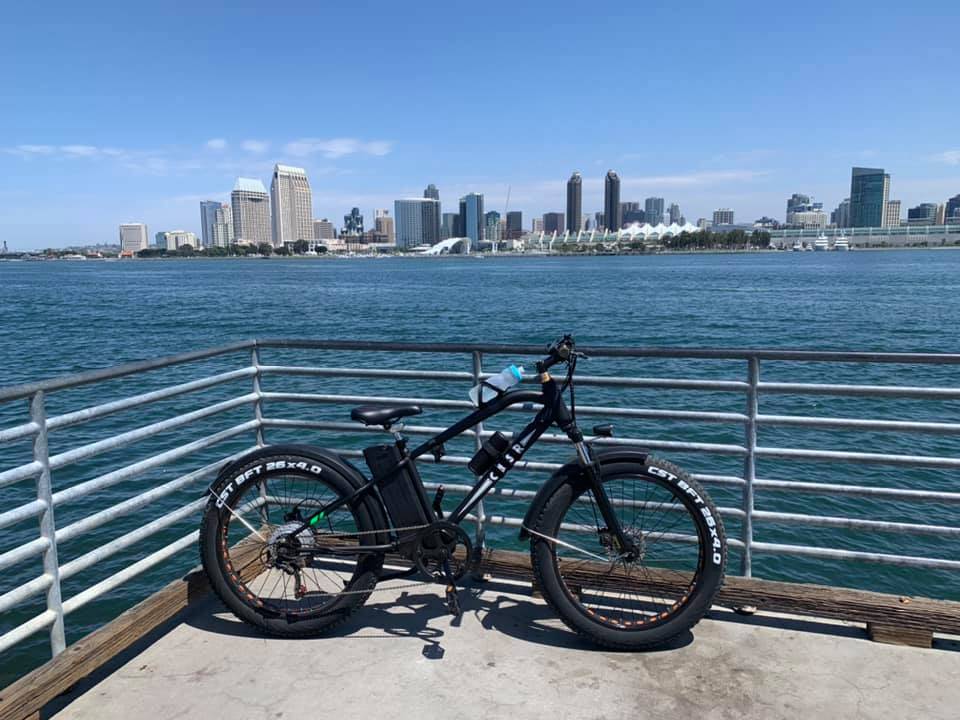
1. Shock absorption. Fat tires can provide better shock absorption If you live in an area where your terrain is bumpy, like a hilly city or rural area, fat tire e-bikes are best because they're able to absorb more of those bumps and shocks than thin tires.
2. Fat tires are ideal for off-roading. The higher surface area of the tires means they have much greater traction on loose surfaces like gravel and dirt, making them perfect for use on trails, paths, or even unpaved roads.
3. Great in bad weather conditions. Thick tread also provides a lot more traction in wet conditions: For example, if you often ride home from work when it's raining, then fat tire bikes will be your best bet as their tread will help them grip on slippery surfaces much better than thin tires would.
4. They're easy to ride. Fat tire e-bikes are incredibly easy to ride, even for beginners. Their large tires provide plenty of traction and stability, making them perfect for cruising around town or on uneven terrain.
5. They're versatile. They can be used for various activities, including commuting, recreational riding, and even off-road biking. Their versatile design means they can be used in various settings and environments.
6. A lower risk of flats when compared with thin tires. Due to their thick tread, fat tire e-bikes are less likely than thin tire e-bikes to have a flat, which is important if you commute on busy streets or off-road on rough terrain that could puncture your tires.
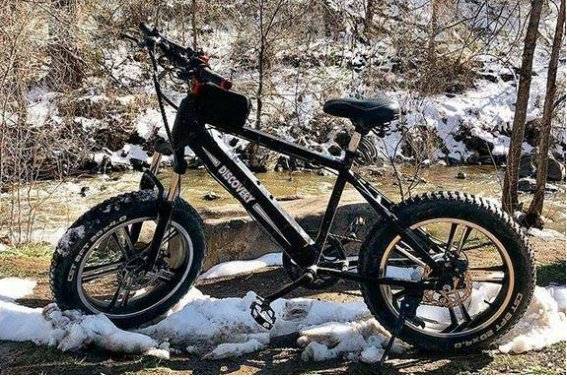
1. Extra weight. E-bikes with fat tires can weigh up to twice as much as their thin tire counterparts. So you should consider if you're planning on riding your e-bike up or down a hill or over obstacles because it could make a difference in how long it takes you.
2. Small battery life. A fat tire bike has a smaller battery capacity than a thin tire bike because more material was used in constructing the fatter tires, so less space is available inside the frame where batteries are stored.
3. More costly. Fat tire bikes typically cost more than thin tire bikes due to their higher price tag and extra components required by the bigger tires.
Q1. Are fat tire bikes harder to ride?
It all depends on your weight and what you're used to riding. If you're heavier or accustomed to riding a mountain bike, a fat tire e-bike might be better for you. If you're lighter and more used to riding a road bike, then thin tires will probably work best. But fat tire e-bikes are generally more difficult to ride than thin tires.
Q2. Do fat tire bikes hold more weight?
Yes, when you ride on a fat tire e-bike, your total body weight is spread out over more surface area than a thin tire e-bike can provide, so you don't feel as heavy when you get up and go.
Q3. Are thin bike tires safe?
Thin tires are just as safe - it's just that they have less cushion between the rider and the ground. However, this doesn't mean they should be ridden on rougher terrains.
Q4. Do thinner bike tires go faster?
Speed has to do with not just your tires but also the motor. You may be able to maintain speeds longer before running into issues with punctures or overheating if you choose a thinner tire . They also give you greater acceleration and allow for sharper turns, perfect for commuters who need to weave through traffic quickly.
If you live in an area with lots of hills or have been considering purchasing an electric bike for added power, then investing in a fat tire model might be worth it.
Thin tire models work best for those who mainly plan to use the electric bike for travel on flat surfaces such as sidewalks or pavement.
The type of surface you intend to ride your electric bicycle on should also be considered when choosing between different models.

